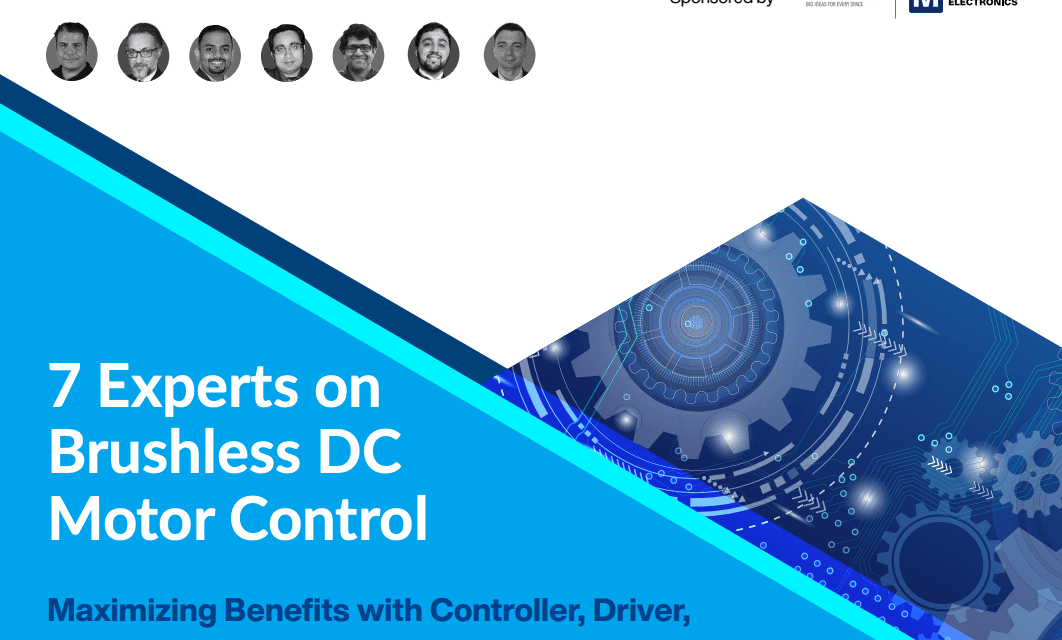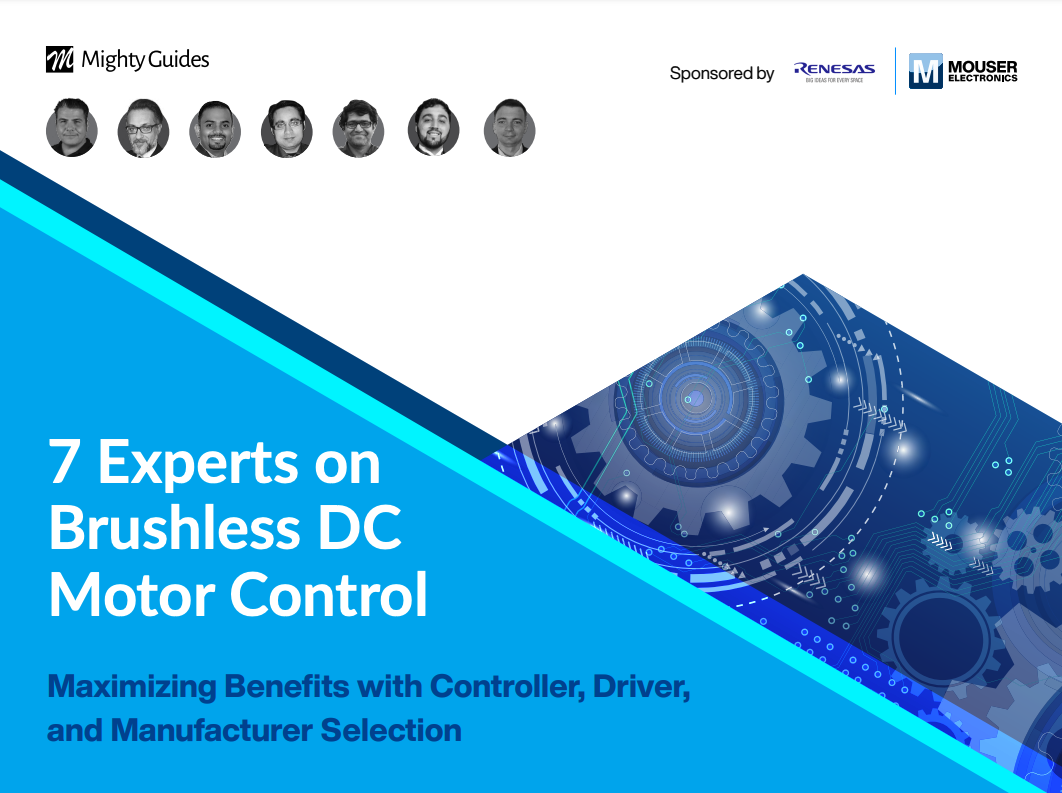- Naveed ur Rehman Malik, Motor Drives Engineer, Dyson
- Bhanu Prakash Villuri, Lead Project Engineer, Stanley Black & Decker, Inc.
- Pyter Ely da Silva, Hardware Engineer, Whirlpool Corporation
- Anton Dianov, Senior Firmware Engineer, Samsung Electronics
- Miguel Mendoza, Principal Technical Marketing Manager, Renesas Electronics
- Suad Jusuf, Senior Manager, AIoT Global, Renesas Electronics
- Dev Mandya, Staff Product Marketing Manager, Renesas Electronics
7 Experts on Brushless DC Motor Control Was generously sponsored by Renesas and Mouser Electronics.
Brushless DC (BLDC) motors first appeared in the early 1960s but have gained traction in recent years because they provide new solutions to old motor and motor control challenges. Developments in highstrength magnets, digital signal processing, and advanced switching capabilities have increased the versatility of BLDC motors, especially in applications that benefit from adjustable speeds, high speeds, low noise, and smooth operation at low speeds. BLDC motors are becoming increasingly common in household appliances, power tools, robotics, drones, automotive devices, and computer peripherals.
At the core of BLDC efficiency is commutation—the process of switching DC motor phase currents and thus changing magnetic fields to produce constant torque in one direction. BLDC motors use software and electrical switch circuits for these functions instead of metal brushes and a mechanical commutator, as found in brushed DC motors. Electrical commutation results in better speed versus torque characteristics at the same or smaller sizes for design engineers as well as dynamic control of acceleration, speed, and torque for consumers.
This ebook explores BLDC function and operation, controllers and drivers, design, costs, and
manufacturer characteristics




